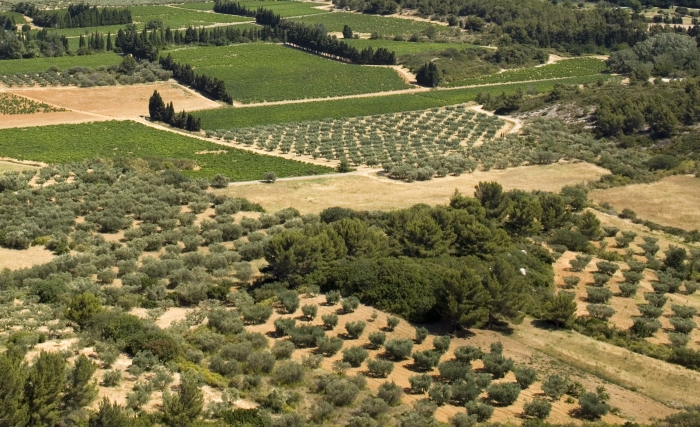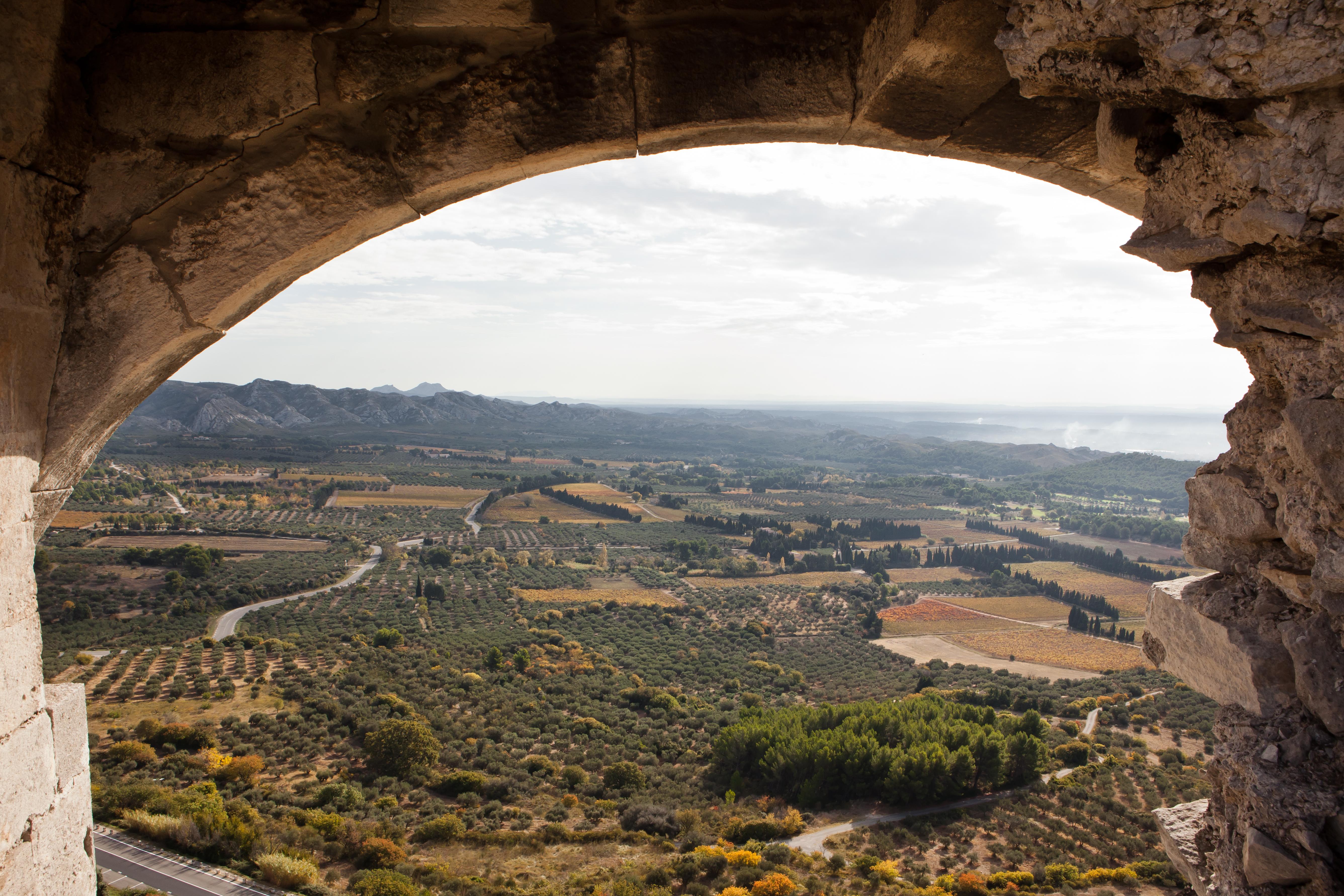The Panoramic View of the Vallée des Baux
Why is this place so important ?
Standing on the outcrop of Les Baux, the castle dominates one of the last foothills in the Chaîne des Alpilles and offers breathtaking panoramic views.
The outcrop offers a view of the Camargue and Provence, which stretch as far as the eye can see. The stretches of water in the distance, such as the Vaccarès pond, are former branches of the Rhône River. On a clear day, one can see the Camargue, which is the largest zoological and botanical reserve in France.
The Crau plain is on the left. The arid part of the plain is home to an exceptional variety of flora and fauna, and the irrigated part of the plain is used for the grazing of flocks of merino sheep, which are driven up into the foothills of the Alps in the summer. Further south, behind the hills, the Via Aurelia—the ancient Roman road—passed through the valley.
In detail
 In the Vallée des Baux, vine and olive tree cultivation predominates. In prehistory, olive trees were cultivated around the Mediterranean, but it was circa 600 BCE that the olive tree was introduced into Provence by the Phoceans. The olive trees, which thrive but are fragile, were in the past partly replaced by vineyards. The olive trees now grow alongside the grapevines, giving the landscape an attractive quality.
In the Vallée des Baux, vine and olive tree cultivation predominates. In prehistory, olive trees were cultivated around the Mediterranean, but it was circa 600 BCE that the olive tree was introduced into Provence by the Phoceans. The olive trees, which thrive but are fragile, were in the past partly replaced by vineyards. The olive trees now grow alongside the grapevines, giving the landscape an attractive quality.
Did you know?
Between the hills can be seen some small parcels of red earth. They are all that remain of the bauxite quarries, a rock whose name originates from Les Baux and which is used to make aluminium.
